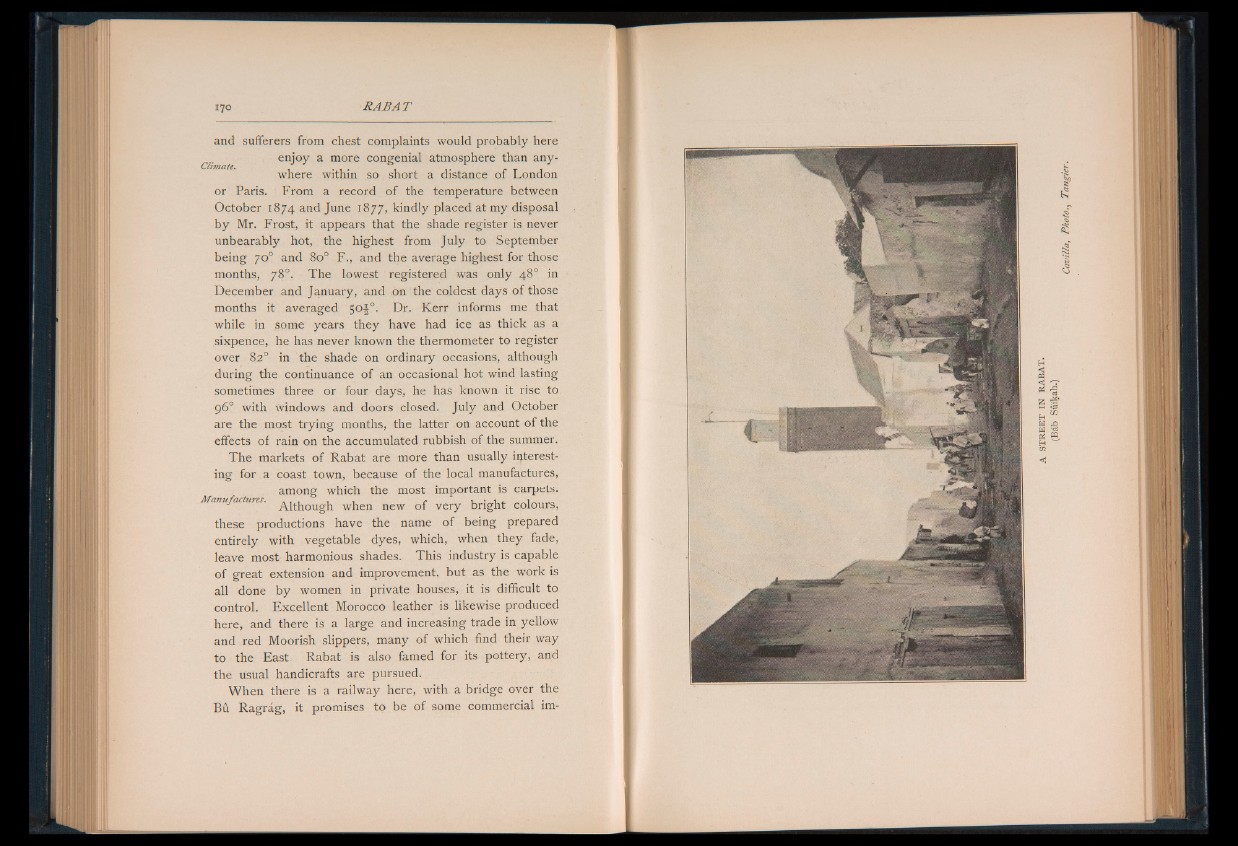
and sufferers from chest complaints would probably here
1 ^ enjoy a more congenial atmosphere than anywhere
within so short a distance of London
or Paris. From a record of the temperature between
October 1874 and June 1877, kindly placed at my disposal
by Mr. Frost, it appears that the shade register is never
unbearably hot, the highest from July to September
being 70o and 80o F., and the average highest for those
months, 78o. The lowest registered was only 48o in
December and January, and on the coldest days of those
months it averaged 50J0. Dr. Kerr informs me that
while in some years they have had ice as thick as a
sixpence, he has never known the thermometer to register
over 82° in the shade on ordinary occasions, although
during the continuance of an occasional hot wind lasting
sometimes three or four days, he has known it rise to
96o with windows and doors closed. July and October
are the most trying months, the latter on account of the
effects of rain on the accumulated rubbish of the summer.
The markets of Rabat are more than usually interesting
for a coast town, because of the local manufactures,
among which the most important is carpets.
Manufactures, ^ t h o u g h when new of very bright colours,
these productions have the name of being prepared
entirely with vegetable dyes, which, when they fade,
leave most harmonious shades. This industry is capable
of great extension and improvement, but as the work is
all done by women in private houses, it is difficult to
control. Excellent Morocco leather is likewise produced
here, and there is a large and increasing trade in yellow
and red Moorish slippers, many of which find their way
to the East. Rabat is also famed for its pottery, and
the usual handicrafts are pursued.
When there is a railway here, with a bridge over the
Bü Ragrág, it promises to be of some commercial im